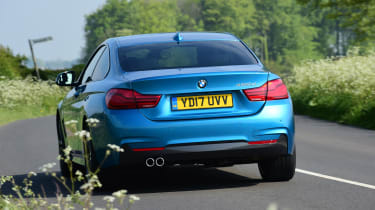Used BMW 4 Series (Mk1, 2014-2020) review - What should you look out for?
BMWs are usually well made and very safe, but long-term reliability is shakier
There’s a palpable sense of quality when you pop the door handle, see the frameless side glass drop by that precise couple of millimetres to clear the door seal, swing the door open and drop inside. Most of the cabin surfaces look and feel lustrous, and options such as Nappa leather and carbon trim can make a BMW 4 Series look, feel (and actually be) very expensive.
General mechanical reliability is pretty good, but you need to keep an eye out. Previous versions of the BMW four-cylinder diesel engine were prone to developing serious trouble with their timing chains and turbos. BMW has made efforts to rectify these on more recent models, but we’d advise keeping strictly to the service schedule and stay within the BMW dealer network for servicing, just in case any problems do develop.
Common used BMW 4 Series problems
Base trim
A new entry-level 418d Coupe arrived in spring 2015, with a detuned 2.0-litre engine.
Spare wheel
There’s no need to carry a spare wheel, because all 4 Series models come with run-flat tyres.
Modes
Drive Performance Control is standard; it adjusts the throttle response, steering and suspension.
Corroded rims
Alloy wheel corrosion around the centre caps isn’t unusual; dealers will replace wheels under warranty.
Recalls
There have been six recalls for the 4 Series. The first came in January 2015 to deal with seatbelt concerns. The engine stalling and the rear axle working loose prompted action in June 2015 and October 2016.
In December 2016 a campaign started for possible electric power steering faults. The most recent recalls, in January and September 2017, related to glitches with the airbags and front seat securing mechanism respectively.









